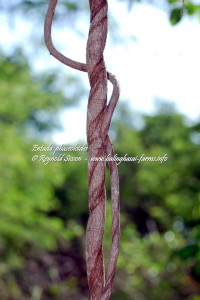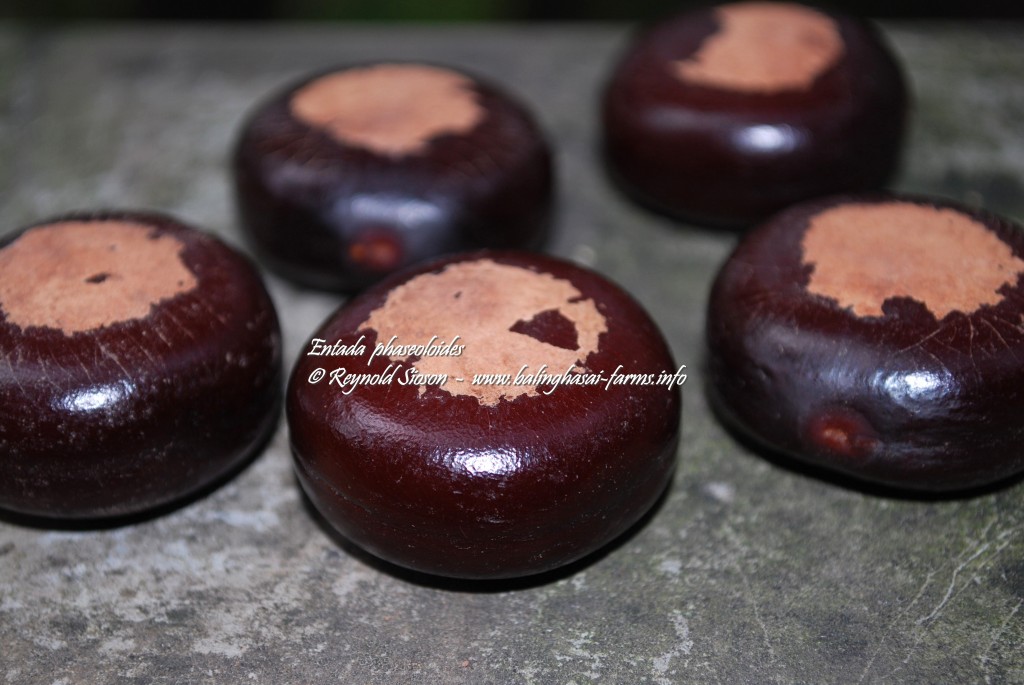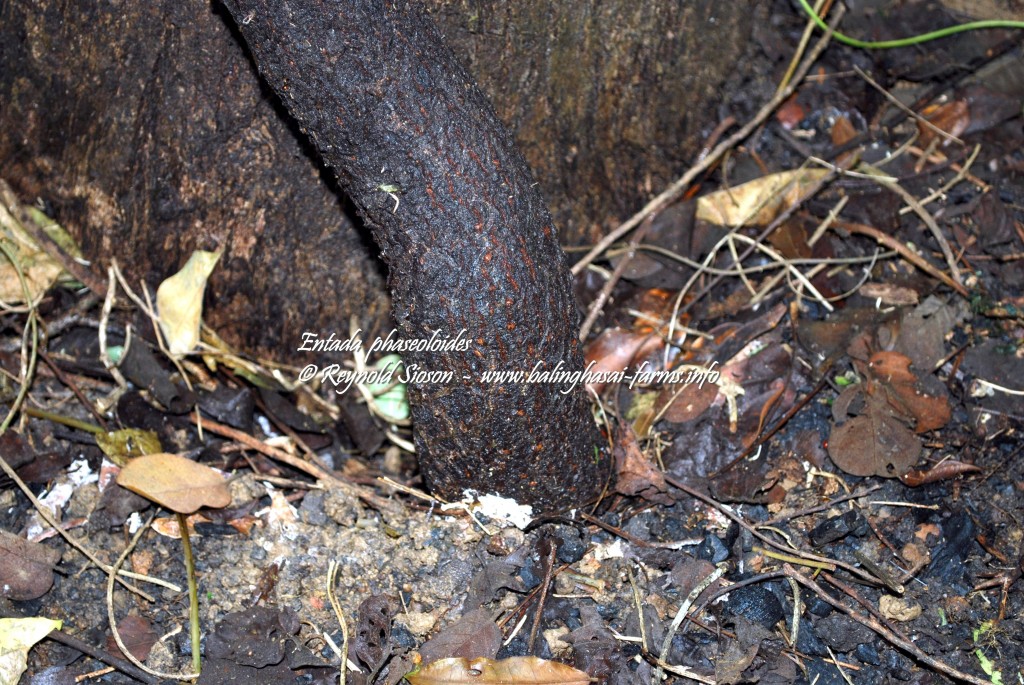Thank you Mr. Edmund Sana, Mr. Danny Tiu and Mr. Rey Palacio for the Gugo seeds you gave us a few years ago; they’ve grown fast and tall. Some have already colonized the canopy of the larger trees in the farm.
Specimen height : 6-10 meters
Local names : Gugo, Balugo, Bayugo
Trade names : St. Thomas bean, Gogo bean
Botanical name : Entada phaseoloides
Family : Fabaceae-Mimosoideae
Traits : Coastal species; Drought tolerant; Evergreen; Fast-growing; Low to medium altitude species; Nitrogen-fixing; Perrenial; Salt-spray tolerant; Tolerant of infertile soil; Sub-tropical to tropical species; Woody climber
Recommendations : Farms; Hedgegrow; Landscaping; Large gardens; Medicinal plant; Reclamation; Specimen; Urban parks; Wildcrafting
 Used for : Used in traditional medicine; Seeds are used as ethnic-inspired ornaments and jewelries; Drinkable water may be obtained from cut stem (?); Cut, dried and pounded stems are used in making the olden Gugo hairwash
Used for : Used in traditional medicine; Seeds are used as ethnic-inspired ornaments and jewelries; Drinkable water may be obtained from cut stem (?); Cut, dried and pounded stems are used in making the olden Gugo hairwash
Native range : Coastal Africa, Coastal Asia (including the Philippines), Australia and Western Pacific islands
National conservation status : Not threatened
Further reading :
Chinese Plant Names - Entada phaseoloides http://www.efloras.org/florataxon.aspx?flora_id=3&taxon_id=200012124
National Tropical Botanical Garden - Entada phaseoloides http://www.ntbg.org/plants/plant_details.php?plantid=4612 (186)



